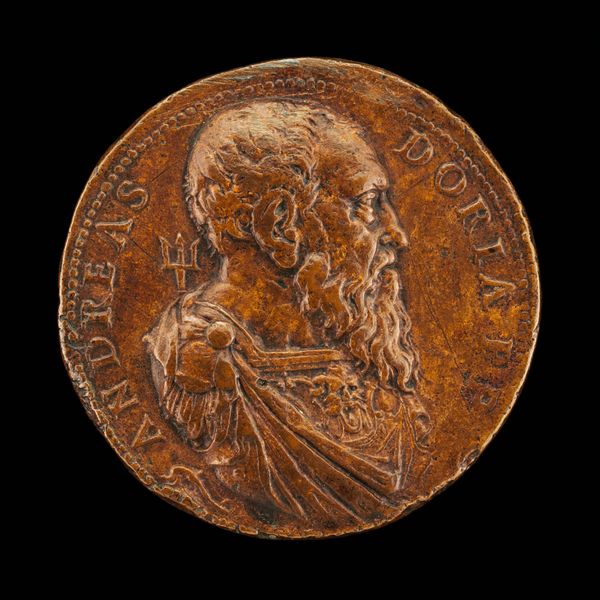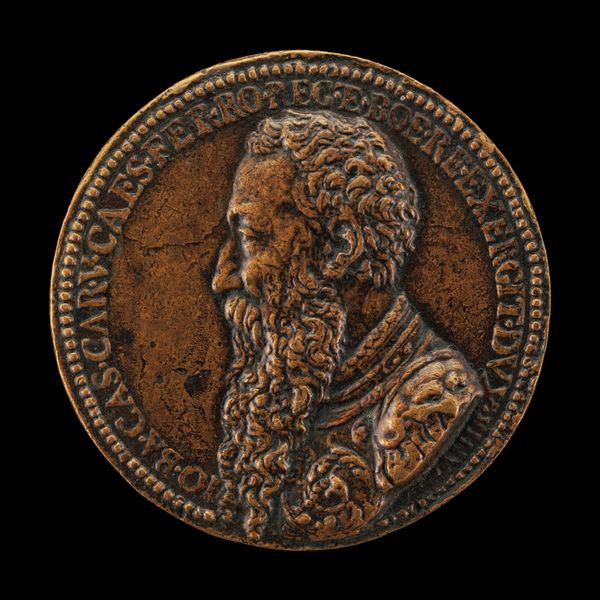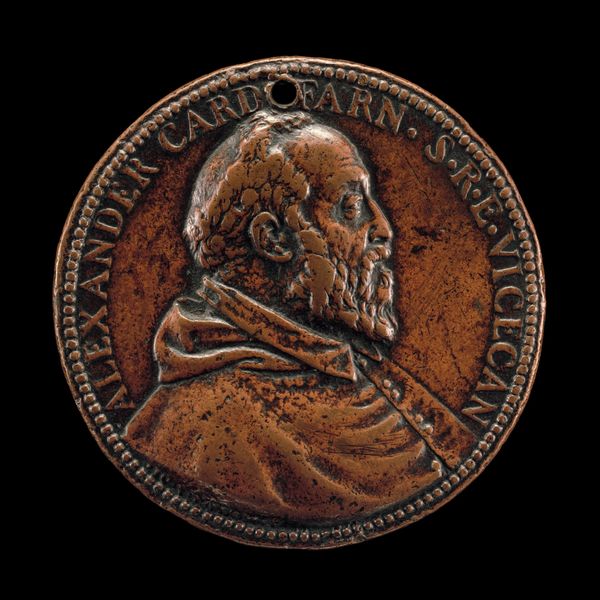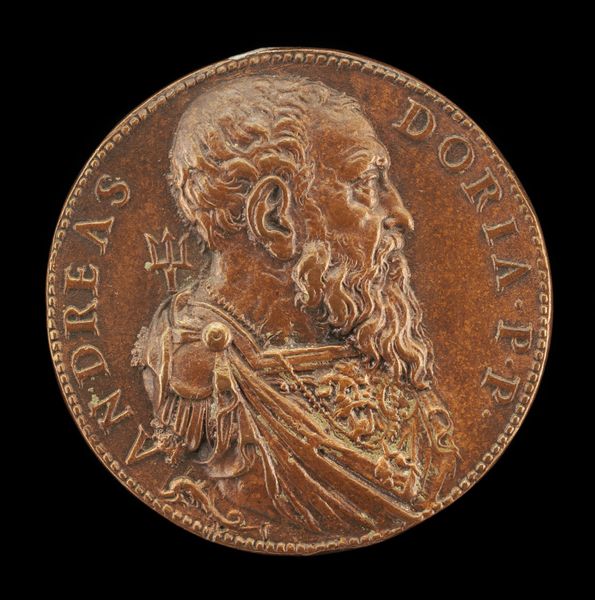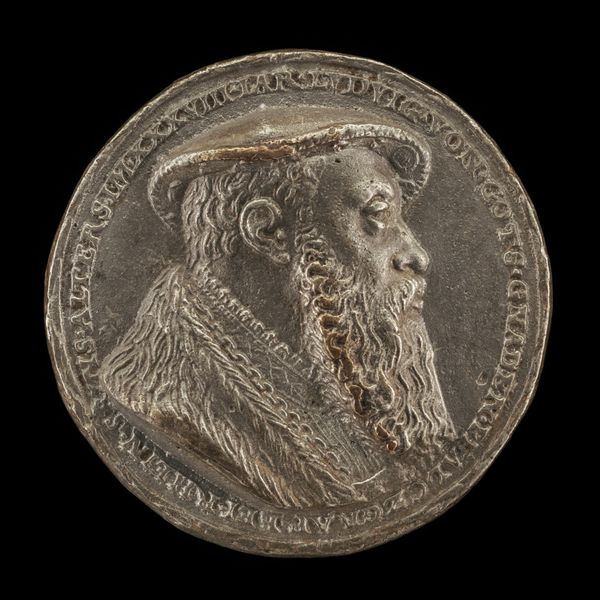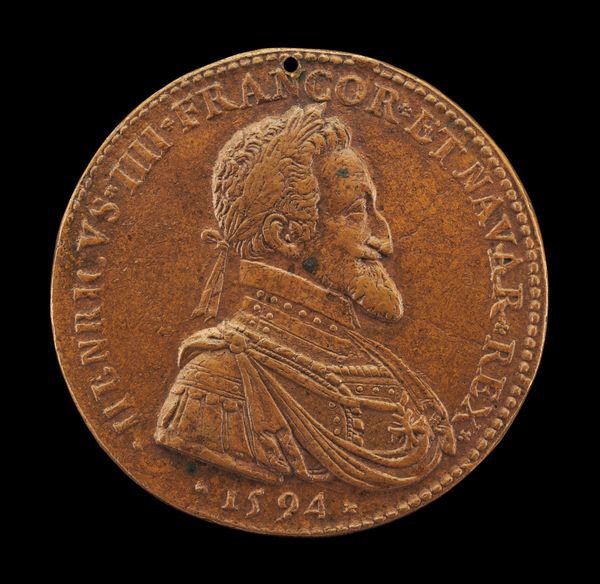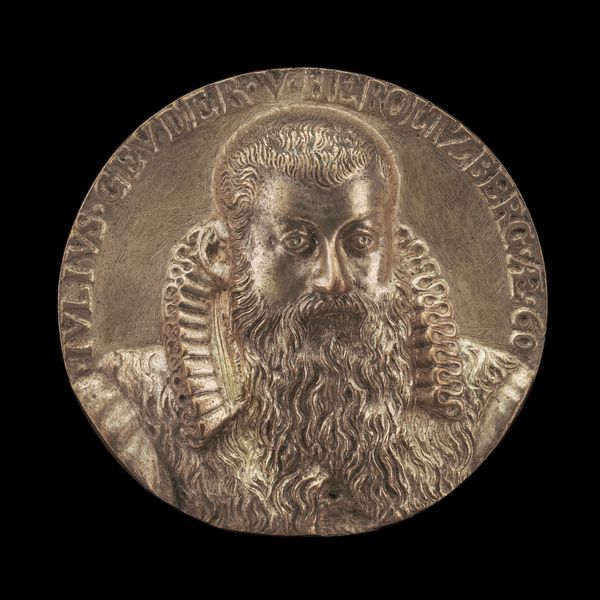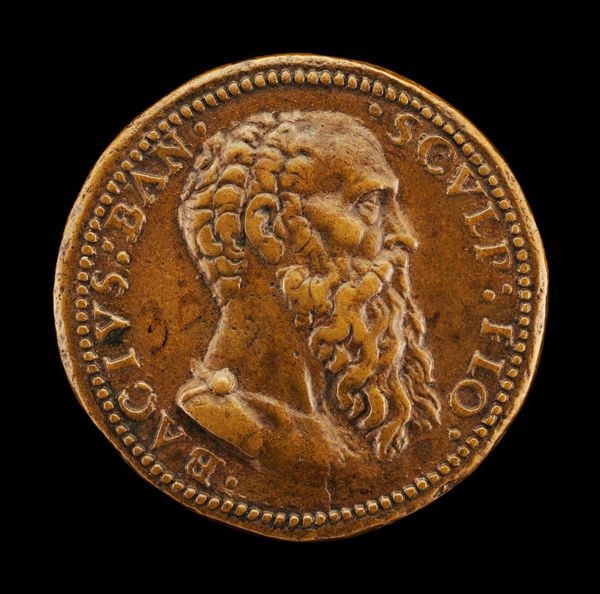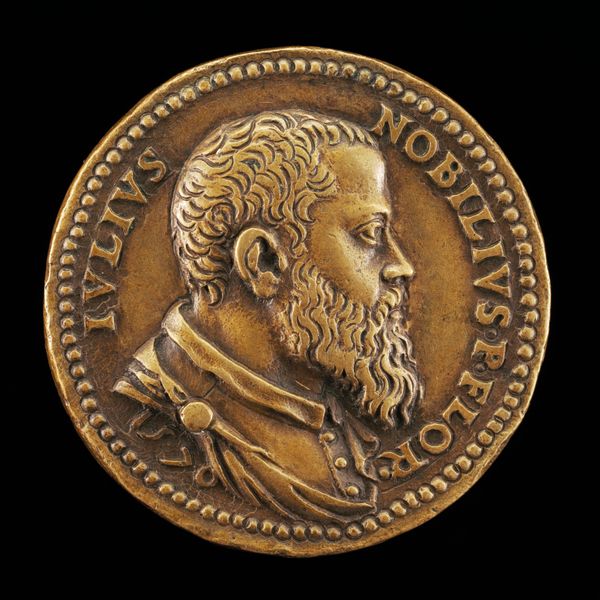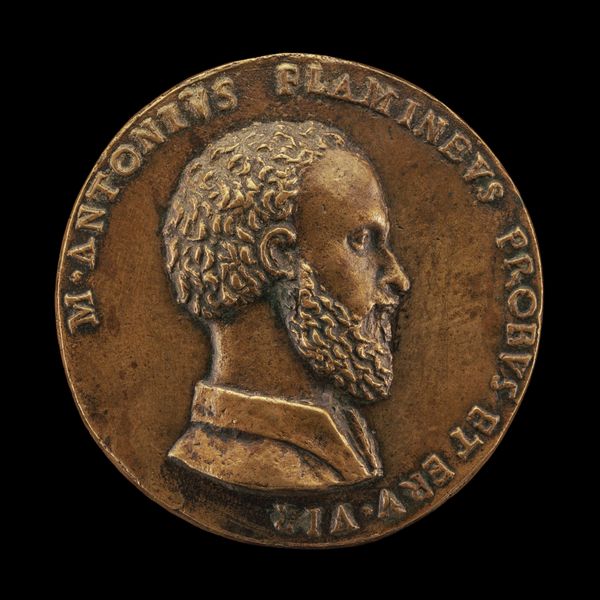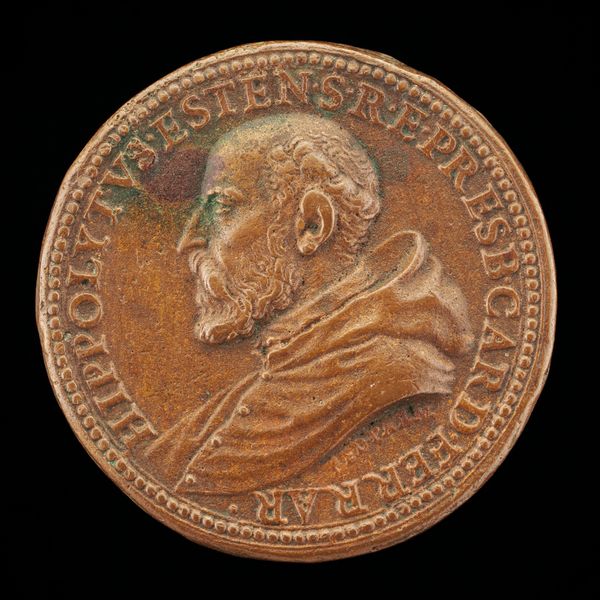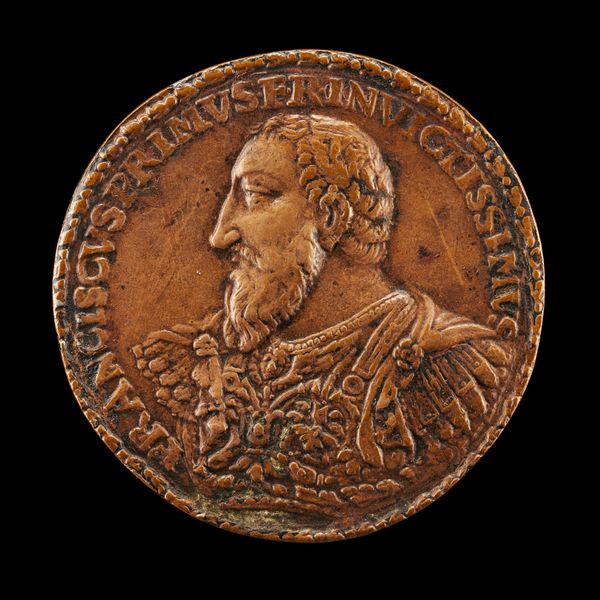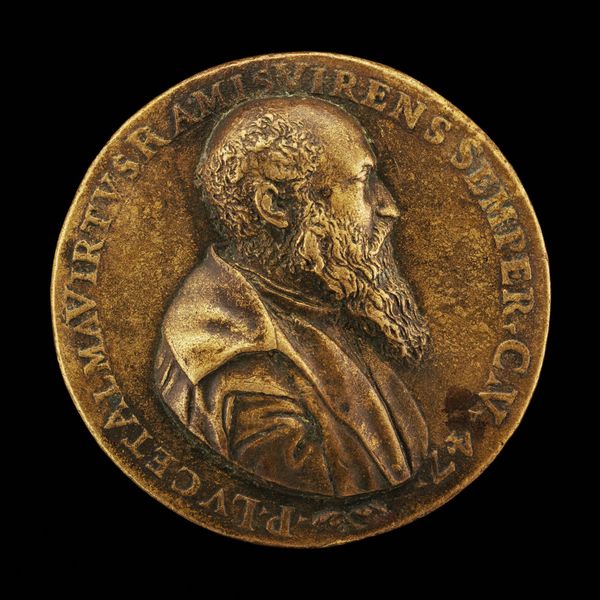![Cardinal Federico Cesi, Bishop of Palestrina [obverse] by Giovan Federico Bonzagni](/_next/image?url=https%3A%2F%2Fd2w8kbdekdi1gv.cloudfront.net%2FeyJidWNrZXQiOiAiYXJ0ZXJhLWltYWdlcy1idWNrZXQiLCAia2V5IjogImFydHdvcmtzLzFiMjUzYzYyLWU4N2QtNGU5Yy04ZDEzLTAxMGNiMTNlMDg1Ni8xYjI1M2M2Mi1lODdkLTRlOWMtOGQxMy0wMTBjYjEzZTA4NTZfZnVsbC5qcGciLCAiZWRpdHMiOiB7InJlc2l6ZSI6IHsid2lkdGgiOiAxOTIwLCAiaGVpZ2h0IjogMTkyMCwgImZpdCI6ICJpbnNpZGUifX19&w=3840&q=75)
Cardinal Federico Cesi, Bishop of Palestrina [obverse] 1561
0:00
0:00
carving, metal, relief, bronze, sculpture
#
portrait
#
carving
#
metal
#
stone
#
sculpture
#
relief
#
bronze
#
sculpture
#
carved
#
italian-renaissance
Dimensions: overall (diameter): 3.6 cm (1 3/8 in.) gross weight: 35.23 gr (0.078 lb.) axis: 6:00
Copyright: National Gallery of Art: CC0 1.0
Editor: This is the obverse of the bronze medal depicting Cardinal Federico Cesi, Bishop of Palestrina, crafted in 1561 by Giovan Federico Bonzagni. There's an incredible level of detail for such a small, circular work. What stories do you see embedded in this portrait? Curator: These medals served important socio-political purposes in the Renaissance. Think about their circulation – who handled them, who saw them, and what messages they conveyed about power and status. This is less a work of personal expression, more one of strategically crafted imagery for public consumption, however limited. Who do you think the primary audience was? Editor: Perhaps other members of the clergy, or influential families? Did owning such a medal confer status itself? Curator: Exactly. Medals like this reinforced hierarchies and asserted influence. Bonzagni was tasked with capturing Cesi in a way that enhanced his authority. Note the inscription surrounding the portrait - "Federico Cesi, Cardinal," it served to declare and solidify his position. This work reinforces the importance of imagery in shaping perceptions of power. What do you notice about the cardinal's expression and attire? Editor: He seems quite serious, almost stern, which reinforces the idea of authority you mentioned. The robes suggest his religious status. Curator: Precisely. And think about how the bronze material itself lends gravitas. These aren't mere decorative objects; they are carefully constructed pronouncements about an individual's place in society. Looking at how someone chooses to be represented is fascinating when we think about the politics of display. Editor: So, more than a portrait, it's really a political statement, made of bronze. Curator: Precisely. Medals offer unique insight into how power was projected and perceived in Renaissance society. We learn to understand this artwork as a social tool rather than an artistic object.
Comments
No comments
Be the first to comment and join the conversation on the ultimate creative platform.
